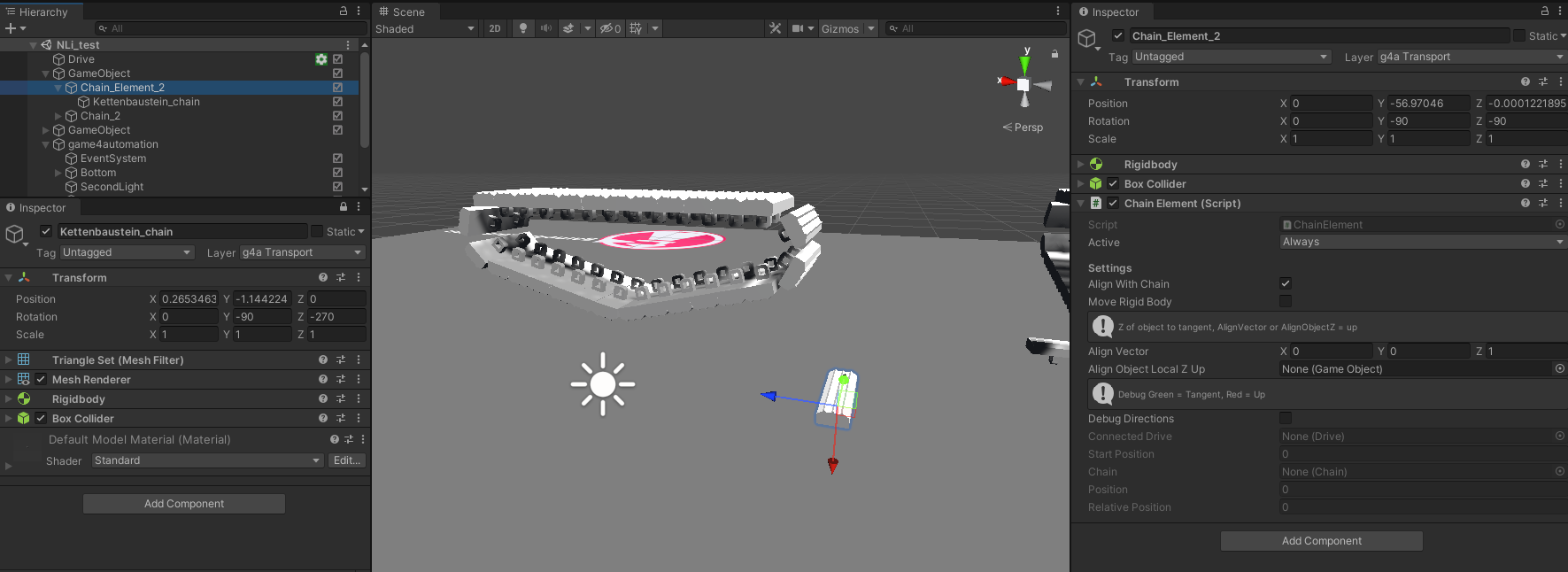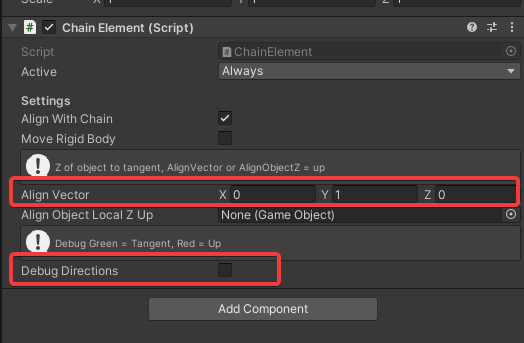Ihre Kommentare
Hi, I am not able to run the test server. Even if the path in your bat file is changed to our path. I am sorry we are not Python experts. Can you send it in a way so it is for sure running on our computer without any special Python configuration need?
Best regards
Thomas
Hello,
when you rotate the chain, the tangents used also change. This means that you have to adjust both the parameters of the chain element and the rotation within the chain element. To change the rotation of the two elements, proceed as follows:
Bring both elements to one level in the hierarchy.
Rotate both elements to the correct position.
Move the mesh element (Kettenbaustein) back under the chain element in the hierarchy.
Below you will find the settings for the chain element and the mesh element used.

Hi,
can you share your PLCSIM-Advanced project (PLCSIMAdvanced 3.0)? Can be a simlified one with just the inputs and outputs.
Thanks
I will add this in one of the next release. For Words you need to write a 9 as Type ID.
Can you send us your example and we will check it.
We exchanged the underlying OPCUA framework after version 2020.13 so if you don't start with a new project we recommend to not upgrade. So the session is created in Editor mode and not in a Player? Are you able to share your OPCUA server for us for testing?
Sometimes the chain aligning is a little bit complicated. Sometimes we also create an emtpy GameObject on top of the CainElement to make aligning more simplle.
Did you tried to change the Align Vector and turn on Debug Directions?

Hard to say. Are you able to get the Log data when you start it as a compiled version. There should be no special settings you need to consider. You could also use this Asset to get the Console Log in the Unity Player Window:
https://assetstore.unity.com/packages/tools/gui/in-game-debug-console-68068
Customer support service by UserEcho


Hi, I am sorry we just have PLCSIMAdvanced3.0. Are you able to downgrad to this version? Thanks.